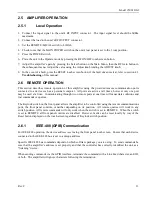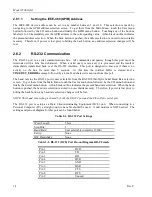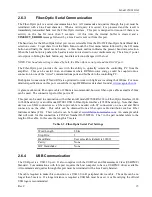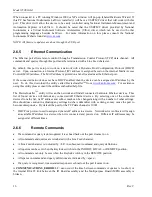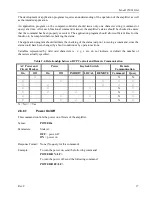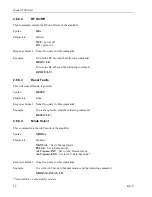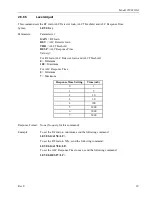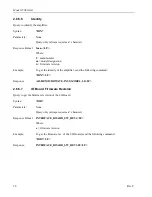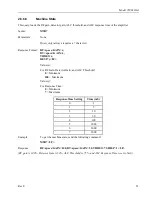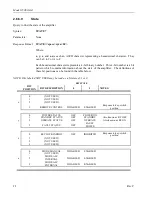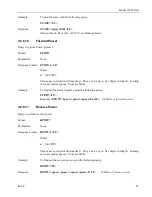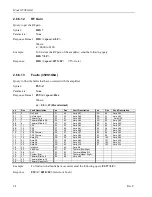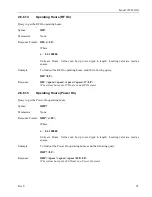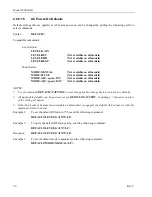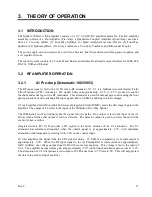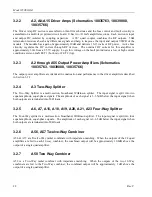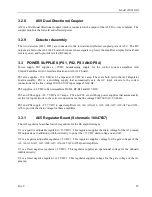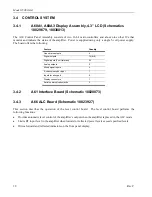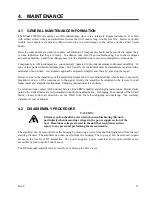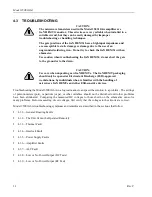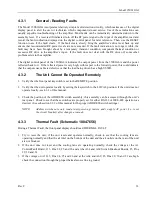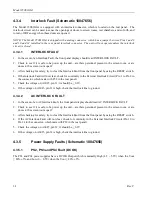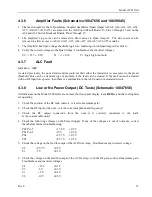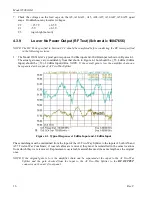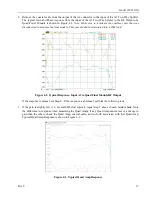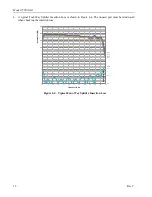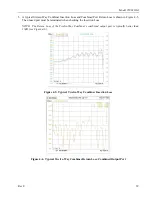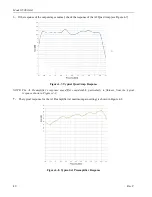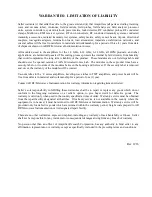
Rev C
27
3. THEORY OF OPERATION
3.1 INTRODUCTION
The Model 350S1G6A RF amplifier consists of a 0.7–6.0 GHz RF amplifier assembly. The RF amplifier
assembly consists of a Pre-Amplifier (Pre-Amp), a Quadrature-Coupled Amplifier (Quad Amp) used as a
driver, a Two-way splitter, (2) Four-Way Splitters, (6) Quad Amplifiers used as Drivers, (6) Four-Way
Splitters, (24) Quad amplifiers, (2) 12-way combiners, a Two-Way Combiner, and Directional Coupler.
The power supply section consists of an AC circuit breaker, line filter and four switching power supplies, and
a (2) regulator circuits.
The control system consists of a Control/Fault Board, an Interface Board and remote interfaces for IEEE-488,
RS-232, USB, and Ethernet.
3.2 RF AMPLIFIER OPERATION
3.2.1
A1 Pre-Amp (Schematic 10035953)
The RF input signal is fed to the A1 Pre-Amp, RF attenuator U1. U1 is a Gallium Arsenide (GaAs) Field-
Effect Transistor (FET) Attenuator. DC signals between approximately -0.5 V to -2.5 V are used to control
the shunt and series legs of the RF Attenuator. This attenuator is used for manual gain control using the front
panel gain control and to attenuate RF input signals above 0 dBm by utilizing internal voltages.
U2 is a broadband GaAs Monolithic Microwave Integrated Circuit (MMIC) and is the first stage of gain in the
amplifier. The output of U2 is fed to the input of the Wilkinson Two-Way Splitter.
The Wilkinson Two-Way Splitter splits the signal into two paths. One output is fed to the input of the A2
Driver Amp and the other output is fed to a detector. The detector output is used to protect the unit in the
event of input overdrive.
Integrated circuit (IC) U1B provides a DC signal to the series element of the U1 attenuator. The U1
attenuator has minimum attenuation when the control signal is at approximately -2.7V, with maximum
attenuation (minimum gain) occurring with -1.9V on the control input.
IC U2A amplifies the signal from the CR1 detector diode. IC U2B is a comparator; its normal output is
approximately -9.7V. When the RF input signal to the A1 Preamplifier is increased above approximately
1mW (0 dBm), the voltage output from U2B will become less negative. This voltage is fed to the input of
U1A. The amplifier has maximum gain at approximately -2.7V control input; minimum gain occurs at -1.9V.
The attenuation of U1 will increase as the output of U2B varies from -9.7V toward 0V. This will help protect
the unit in the event of input overdrive.

